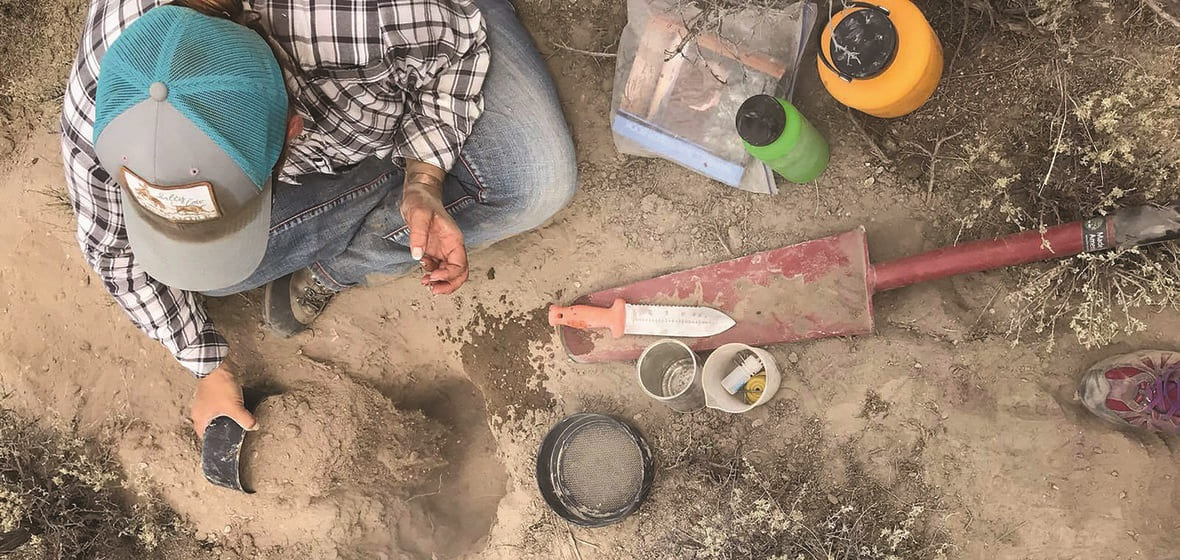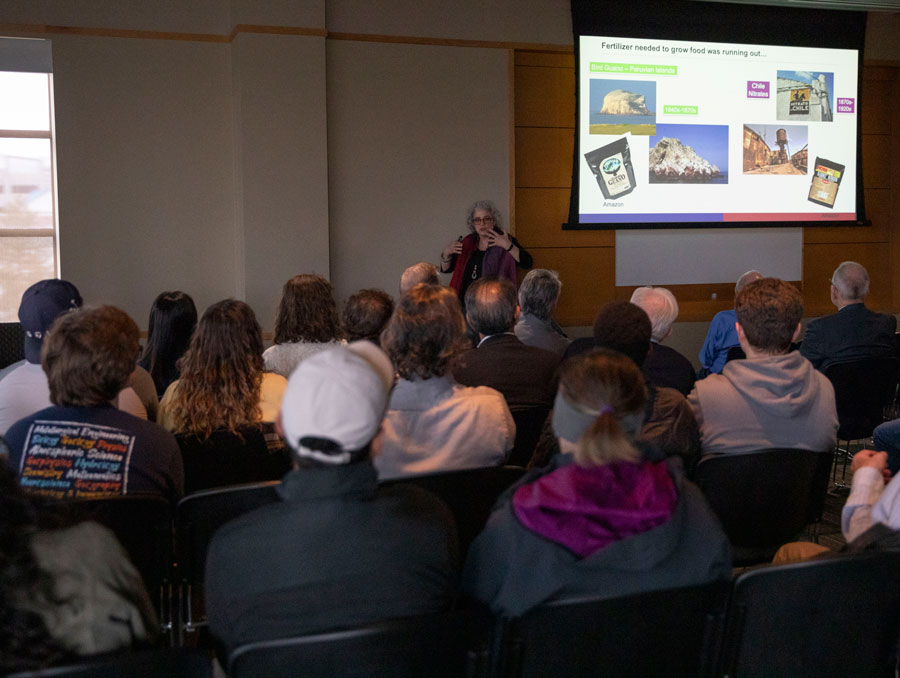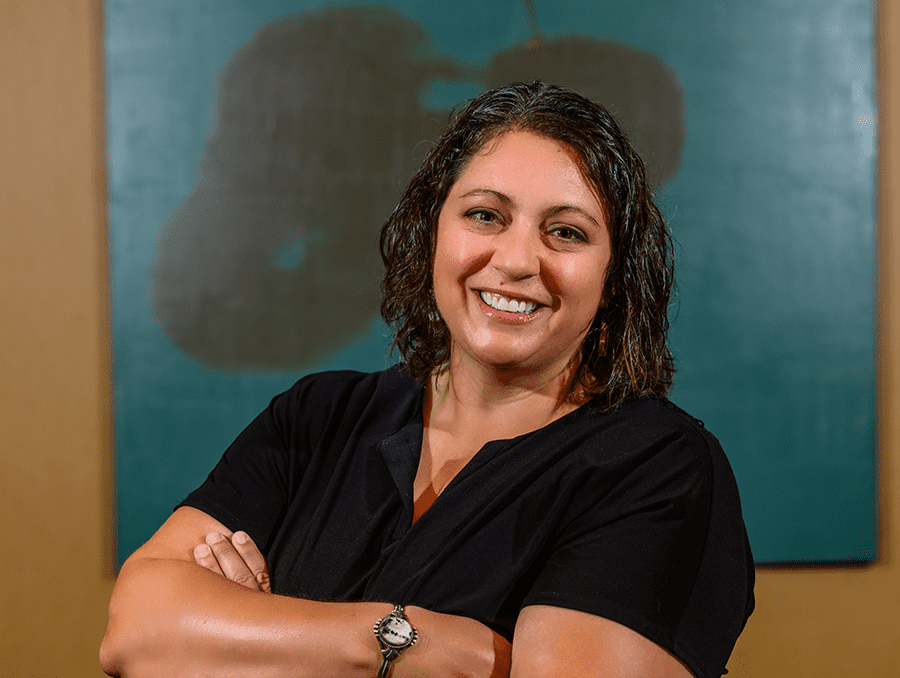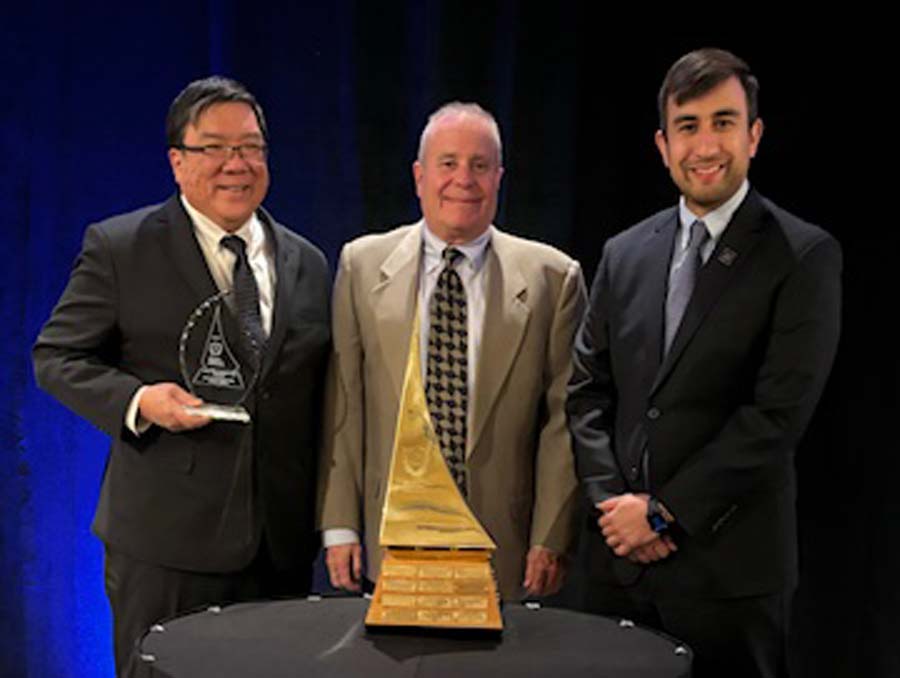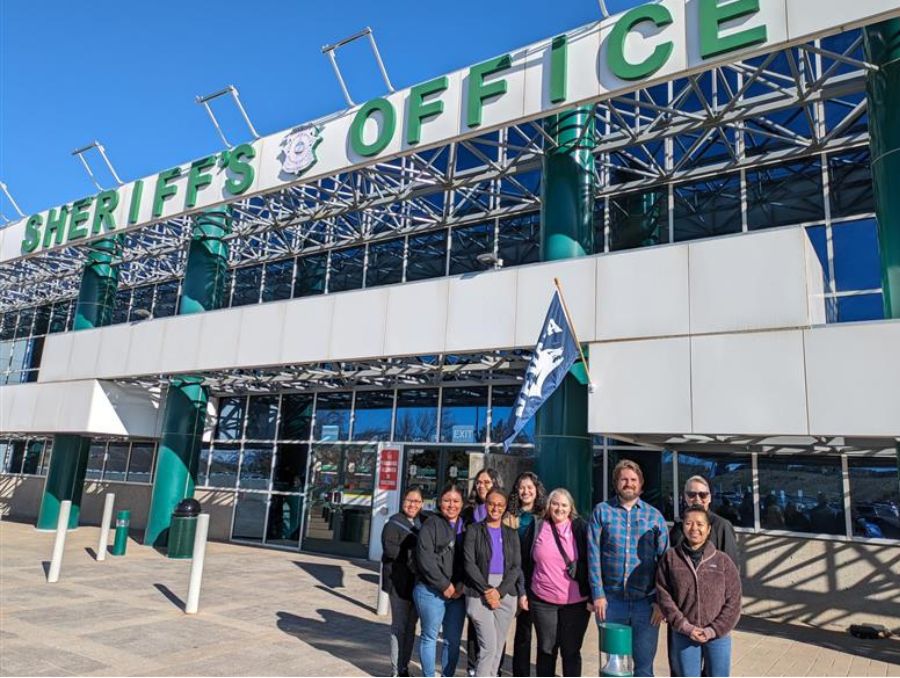“I think my favorite part is helping people navigate what can be confusing processes and of course being outside away from people and cities. There’s a peacefulness working alone on the range that I have always craved,” Jamie Ludwig Dafoe of Winnemucca, Nevada said of her job as a rangeland consultant.
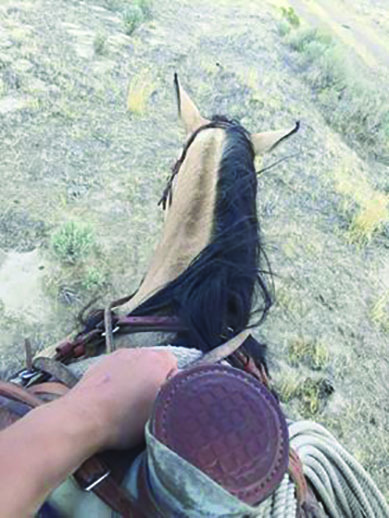
Jamie on horseback day-working for some friends. She looked over their range and answered their range questions. 'Moving cattle can lead to some very in-depth range conversations,' she said. Photo courtesy of Jamie Ludwig Dafoe.
Jamie spends a lot of her time in the field on horseback, working side by side with the ranchers she works for, so she can get a better sense of the people and the range she is helping.
Jamie has a Bachelor of Science in Rangeland Science from the College of Agriculture, Biotechnology & Natural Resources, also known as CABNR, at University of Nevada, Reno and over 15 years of experience in the ranch consultation field.
She's a "Range Con."
“In a gist," she said, "I’m a private rangeland scientist or rangeland management specialist, as the Bureau of Land Management refers to them."
She said Brenda Younkin, who owns the rangeland consulting firm Y2, puts it best: "'We are a translator between ranchers and agencies, and we help ranchers and agencies to find common ground.'"
This makes the management of grazing on public lands a more collaborative process.
The workload changes throughout the year, and the job itself includes many things. One of them is helping a rancher to navigate and understand the process to renew a grazing permit.
As many people gear up for fall works and are coming off of their allotments, Jamie begins to gear up for utilization monitoring, or figuring out how much the plants growing on the range grew this year, especially key grass species, and how much of that growth was eaten or destroyed by grazing animals. Collecting this data on the health and use of the range, she said, is usually part of the parameters of a rancher's term grazing permit. It is one of the monitoring methods that supports term permit maintenance and renewal.
Her work includes many other tasks too. She helps rangeland management specialists to answer stockmanship, or livestock care, questions.
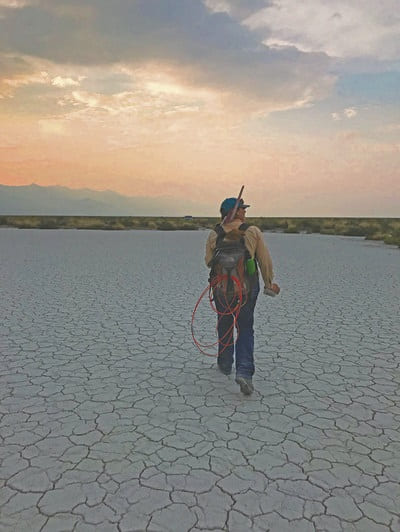
Jamie often hikes into plots to do her assessments. Photo courtesy of Jamie Ludwig Dafoe.
She figures out how much forage (or animal food) exists on a range, which grasses are available for animals to eat, how fast those grasses are growing, what types of grass cows are eating throughout the year, the body condition of cows and now nutritious the grass is for them at different times of the year.
She calculates stocking rates, or the number of animals on a piece of land in a certain amount of time, and she takes into account the details of clients' operations when she provides technical assistance to them.
"If you don't have an understanding of the client’s operation," she said, "it can be difficult to understand why the range may be reacting the way it is."
So she knows what kind of cows her clients have, how much food those cows need (measured in Animal Unit Month or AUMs), their cattle rotations, what type of grass and forage is in each of their pastures and what their approach is to supplementing their animals' food.
"In the past," she said, "I have gone out and day-worked with clients to better understand their operation.”
This work has taken her all over the intermountain west, including the states of Nevada, Utah, Idaho, Oregon and Wyoming.
“Given my history in consulting, I have become," she said, "and I guess have always been, very interested in riparian grazing stockmanship."
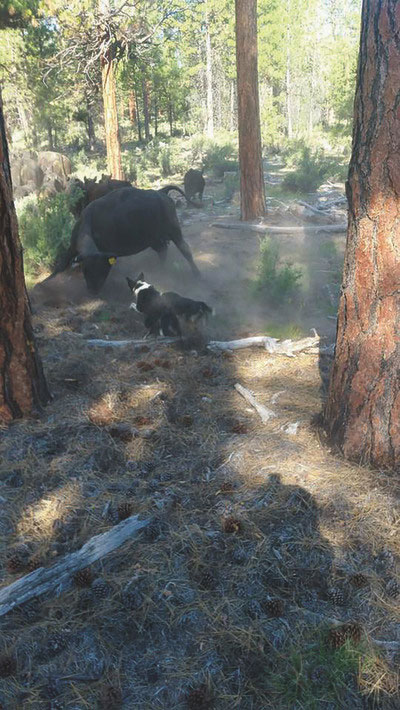
"We were moving cows on a Forest Service permit that also hasprivate logging in it," she said. "So, we were pushing through downed plantation trees, and having good water dispersal and good stock dogs was vital." Photo courtesy of Jamie Ludwig Dafoe.
This means the stewardship of animals in areas of greenery along water-courses.
Although well-traveled, she grew up right here in Eureka, Nevada. This gave her a unique perspective on agriculture and water.
"Having grown up in Nevada constantly surrounded by and involved in agriculture and watching the evolution of grazing on public lands has really driven home for me the point that water is still what is driving us all in this state," she said.
This history is what inspired her to become involved with Nevada Creeks and Communities, led by CABNR Associate Professor and University of Nevada Cooperative Extension State Specialist Sherm Swanson. The program offers education and training, including on riparian monitoring techniques, to ranchers and land managers.
Her work, she said, has also led her to be involved with low-stress stockmanship schools and stockdog training. Low-stress cattle handling improves animal safety, health and meat quality. It also makes life better for the people who care for the animals. And, while dogs are man's best friend, they're good for livestock too. They can be used as part of low-stress stockmanship and can help a rancher to move cattle up a range a bit or gather them back up again to be transported off of a range.
To others wanting to do the work she does, Jamie has a few words.
“The best advice I can give a young girl wanting to get into the ranch or range consulting field," she said, "is to know cattle and know ranches."
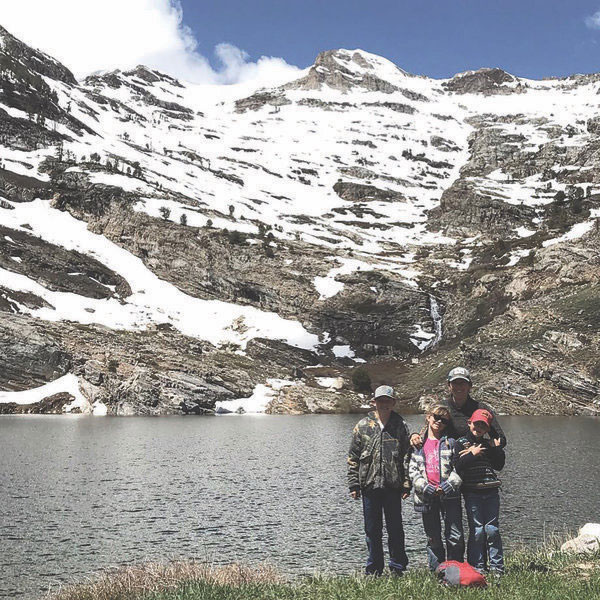
Jamie and her children, Logan, Ava, and Bo, near Angel Lake. Photo courtesy of Jamie Ludwig Dafoe.
Jamie enjoyed awesome opportunities growing up and over the course of her career to see and be on many different types of operations all across the intermountain west. When you know cattle and you know ranches like Jamie does, you can help them.
"Even if you have a background in agriculture," she said, "work on as many types of operations you can, get around as many old-timers as you can. They knew how to read grass without having to know the Latin name or when its growth cycle is."
"Be willing to work hard, be willing to listen and respect the people on the land that you serve," she said, "and above all: never assume, always ask.”
When Jamie is not busy being a Range Con, she's busy being a mom. Balancing it all takes work.
“I think juggling being a mom, single or married, with any profession is difficult," she said. "It's a constant juggle with prioritizing family and profession."
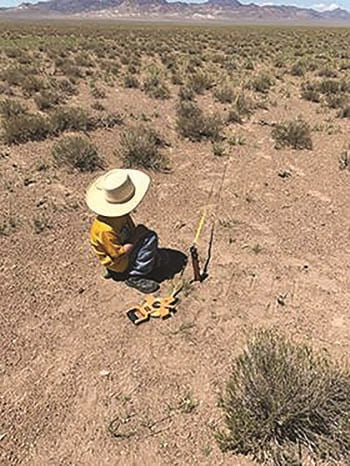
Young Bo helps his mom on a ranch in central Nevada. They're running a range utilization and trend transect. A transect documents changes in vegetation and soil caused by grazing. Photo courtesy of Jamie Ludwig Dafoe.
Jamie's son Logan is 11, daughter Ava is 9 and youngest son Bo is nearly 7. Her children love being on horseback, participating in school sports and being involved in 4-H, a program of Cooperative Extension.
Even though balancing family and work is a challenge, it's an opportunity too.
She said, "Agriculture allows us a very unique opportunity in this day and age to have our children involved and to be involved with our kids more so than other jobs."
An example of that is when she had a unique situation come up, she asked her client if she could bring her children with her to their ranch.
"They were more than welcoming," she said. "There aren't a lot of professions like that."
She may bring her kids to work sometimes, but Jamie tries not to bring her work home with her.
"Work is work at the end of the day and being a mom is my first priority," she said. "So you have to leave the problems outside your front door."
It's tough balancing grass and grazing animals, ranchers and agencies, work and family.
"A strong faith helps with juggling it all," she said. "A crockpot is also a must.”
